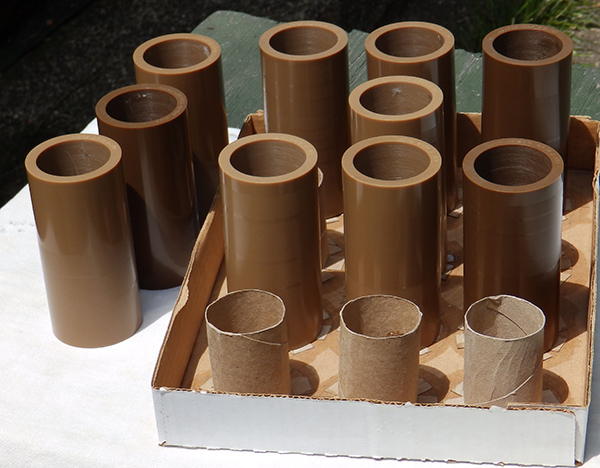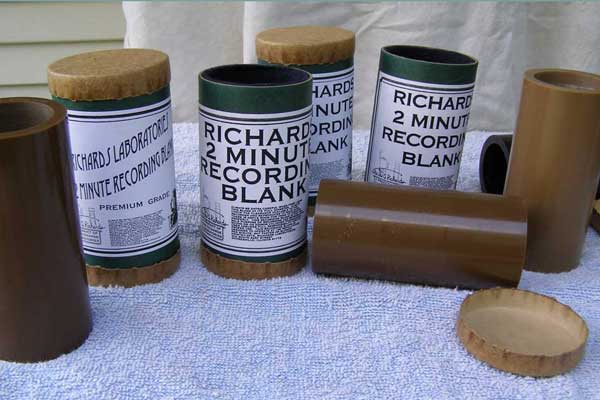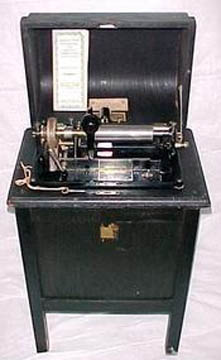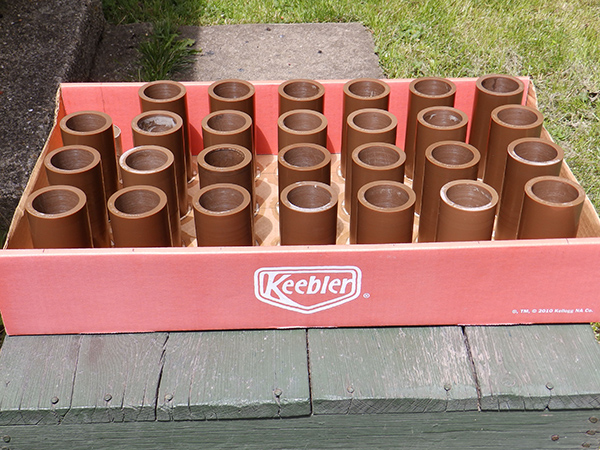New - From The New York Times - Romancing the Horn: Opera Stars Record Like It's 1900
Listen and compare two Metropolitan Opera singers as they’re captured on both turn-of-the-20th-century wax cylinders and modern technology.
https://www.nytimes.com/2018/04/20/arts/music/met-opera-beczala-recording-edison.html
Richards Laboratories recording blanks were used for this recording session. Session Log...
About Richards Laboratories
Richards Laboratories produces brand new high quality brown wax recording blanks for use on an Edison cylinder phonograph. These blanks offer superior quality, extremely low surface noise, and they make loud, clear recordings. These Edison cylinder blanks are offered in an extra-length version to maximize recording time. Each recording blank is produced under strict production controls to achieve the highest possible quality. Each recording blank is individually documented and tested to assure the best possible recording and playback results. If you are looking for the top quality Edison cylinder blank made in the USA, Richards Laboratories is the source.
The research for this project began in 1978. Many long evenings were spent in the patent records department at the Milwaukee, Wisconsin public library. From the information found there, the project gained momentum.
By 1982, an original Edison cylinder mold had been measured and copied. Also during 1982, an interesting textbook was discovered that had more information about the brown wax formula.
Around that same time the Dictaphone electric-motor driven shaving machine from 1923 was purchased, along with some black Ediphone dictation blanks. Also, during the early 1980s, two original Edison "home" recorders were purchased and rebuilt.
From the mid-1980s until 2009, experience was gained using the shaved-down dictation blanks to make recordings.
In 2009, the mold cylinder was finally finish-bored, and the wax formula from the old textbook was used for the first time to make a batch of brown wax.
Many experiments and tests have been carried out since the first summer 2009 making blanks. This is a seasonal production, they are made from May 15th, through September 30th. Approximately 50 per year are made.
Research, testing, and experimentation is ongoing.
Production List
| Year | Blanks Made (serial numbers) | Total |
|
2009 |
M1 through M47 | 47 |
| 2010 | M48 through M102 | 55 |
| 2011 | M103 through M145 | 43 |
| 2012 | M146 through M211 | 66 |
| 2013 | M212 through M268 | 57 |
| 2014 | M269 through M326 | 58 |
| 2015 | M327 through M367 | 41 |
| 2016 | M368 through M381 | 14 |
| 2017 | M382 through M398 | 17 |
| 2018 | M399 through M416 | 18 |
| 2019 | M417 through M429 | 13 |
| 2020 | none | 0 |
2020 notes: Temporarily closed due to unsafe travel factors
Seeing as how there was no update for 2018, and it is now late in the fall of 2019, two whole production seasons have passed with no updates. The best way to convey the activity is to quote from the "end of season" notes which I write up at the end of each summer in the lab notebook. That way, after taking the winter off, it is easy for me to refer to these notes in order to see where I left off.
9/19/18 End of Season Notes:
Made (6) wax batches this summer. Cast (18) blanks: (6) scrappers and (12) straight runs. Started a new scrap run SR4. Have reverted to the old time-tested method of making each scrapper blank individually by combining available scrap and then adding and cooking in 1.25% added stearic, cooked for 20 minutes at 232 degrees C. All the while trying to hold the percent of meta-scrap down to 50% or less if possible. This method produces quite reliable and consistent results although there is always some unpredictability involved with scrapper blanks. The technique seems to always be one of attempting to minimize as far as possible, this unpredictability, while maximizing desirable qualities in the final product. Meanwhile, the straight run blanks continue to be much easier to manage.
9/12/19 End of Season Notes:
Only made (13) blanks this season. Made (5) scrappers and (8) straight runs. Made (4) wax batches. The scrap cycle seems to be basically ok, but there are some annoying random tendencies to it that continue to linger there. Straight runs continue to be very reliable and consistent.
Summer, 2019 blank production got temporarily suspended for a few weeks in July as I was putting a brand new tin roof over the laboratory building. That had to be done because rain water dripping in to a fresh wax batch as it cooks does not exactly reflect the commitment to absolute quality of this establishment. Once the new roof was finished, then the whole place was thoroughly cleaned and made ready once again for continued production. We were putting out finished goods within 14 days of the start of that roofing project.
The conclusion from the past (2) production seasons of 2018 and 2019 points to the fact that the straight runs are much more manageable and consistent than the scrap cycle. The scrap cycle has, overall, about a 70% yield of saleable product, where as the straight run cycle is always 100%. The scrappers always have had, and continue to have a rather mysterious element of Black Magic about them. What always keeps me coming back to that portion of the process is its tendency to produce absolutely stunning results about 5% of the time. Just when it starts getting quite disgusting, right around that time is when, seemingly for no known reason, an absolutely perfect blank will come along.
As the 3rd witch says in Shakespeare's play Macbeth, act IV, scene 1 in a dark cave, a caldron boiling, thunder:
Harpier Cries: "'Tis Time, 'Tis Time".
During the summer of 2017, a total of 17 blanks were made. Out of these 17 blanks, 11 are straight-run ones made directly from raw materials. The other 6 blanks are scrap-run ones made as described in the "tech musings" section of this site.
2016 was a sabbatical year for making brown wax blanks. A Scrap Run of 13 blanks was made from all available scrap wax.Those blanks are serial numbers M368-SR3B1, through M380-SR321B13. After using all available scrap, one straight-run wax batch was made, and blank M381 was cast from it.
These blanks will continue to be made in future years. Production quantities are extremely limited, due to the sheer amount of work involved. It is my hope that eventually readers of this website shall use the information posted here, and start making blanks of their own. This entire project is devoted to documenting some of the techniques I have found, which produce superior quality cylinders.
It is far more than one person can accomplish alone. The market is wide open. If you are interested and willing to work, you can pick up and learn for yourself, using this website as a guide.
Email any questions to: This email address is being protected from spambots. You need JavaScript enabled to view it.










